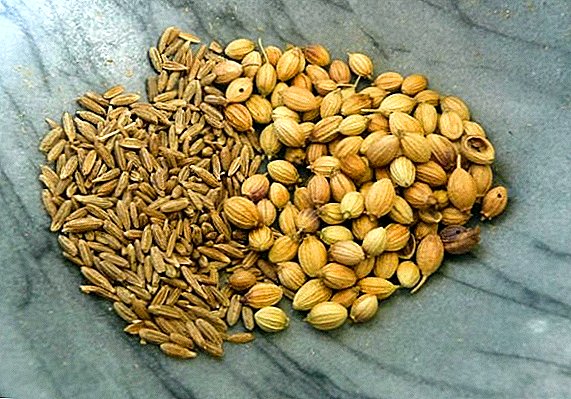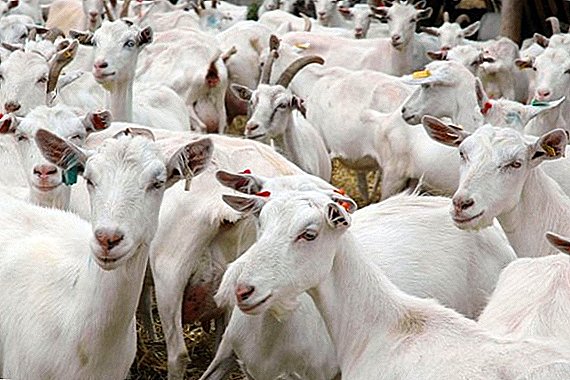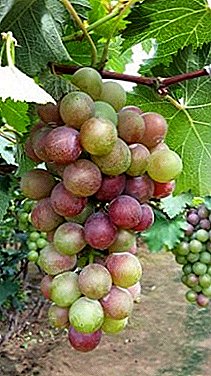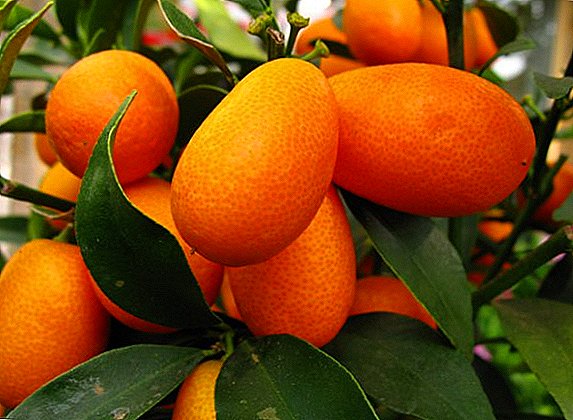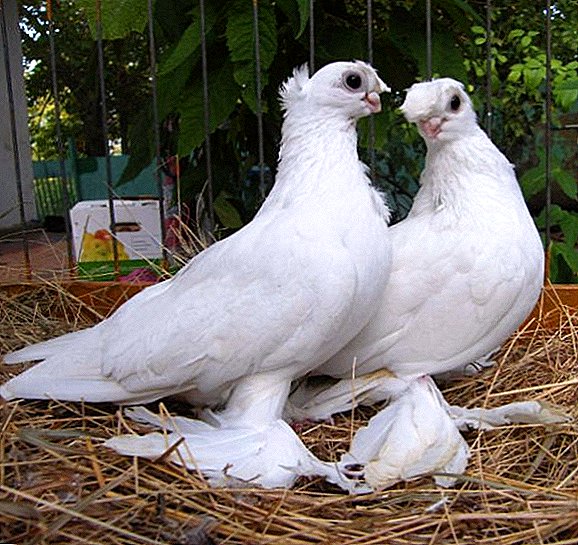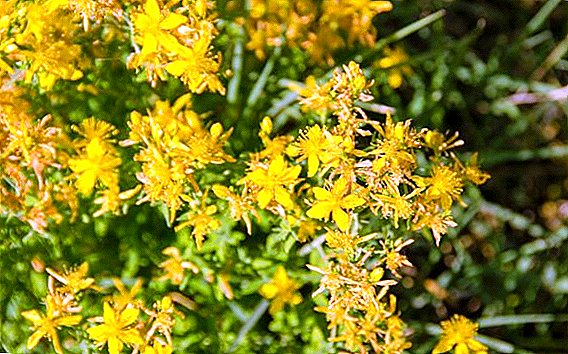
Pearls have always fascinated people with the beauty of glowing mother of pearl and the mystery of their appearance between the wings of marine mollusks.
Pearls (an obsolete form of the word) were compared to earthly beauty - "teeth like pearls", or sharpness of thought - "pearls of speech, pearls of wit."
Not surprisingly, one of the varieties of table grapes, in confirmation of its value, was named “Rearls” or “Pearls”.
Grape Value Pearls
- Short period of ripening (100 days from the beginning of the growing season).
- The increase in yield due to the ripening of brushes on the stepsons.
- Muscat taste of small sweet berries of slightly whitish shade.
- Drought tolerance and frost tolerance (under cover).
- Excellent breeding opportunities stock.
- Universality of use of fruits.
Muscovite Pleven, Aladdin and Valery Voevoda also have a muscat flavor.
 As a variety of the Western European group "Zhemchug", it became widespread in the southeast of the Old World and in the former grape regions of tsarist and Soviet Russia - Moldova, Transcarpathia, and Odessa region.
As a variety of the Western European group "Zhemchug", it became widespread in the southeast of the Old World and in the former grape regions of tsarist and Soviet Russia - Moldova, Transcarpathia, and Odessa region.
Hence, that infinite synonymous series of names, which were assigned to him in different territories:
- in Transcarpathia - "Pearl Chaba" ("Shepherd's Necklace"), "Pearl of Chabansk";
- in Moldova - Pearl de Chaba, Pearl Xaba, Muscat Xaba;
- in Bulgaria - Pearl de Xaba, Pearl de Saba;
- in Romania - Perla de Chaba, Tamayoz Chaba;
- in Hungary (home of the variety) - "Muscat Pearl Chaba", "Chaba gengy", "Chaba Dandye", "Stark Seedling".
Interesting: Several names for one variety are common in fruit growing, although this creates some confusion. The names are given by both breeders (during registration) and amateurs - based on their personal associations.Sometimes familiar names for commercial purposes are replaced by more impressive ones, hinting at the elitism of the origin of the variety. Currently, a computer bank of grape names (20,000 varieties) has been created to accurately identify the variety.
Breeding history
A high-quality table variety of white nutmeg appeared at the beginning of the twentieth century in the territory of the famous Hungary and winemaking. In the vicinity of a small town in the southeast, which retained a reminder of Ottoman rule in its name, Bekescsaba.
Canteen are also varieties Karmakod, Ataman Pavlyuk and Delight White.
 It is believed that the name of a grape variety - “Chaba” - was formed from the ending of the toponym, and the whitishness of the berries suggested an association with a pearl-shaped pea - “Pearl Chaba”.
It is believed that the name of a grape variety - “Chaba” - was formed from the ending of the toponym, and the whitishness of the berries suggested an association with a pearl-shaped pea - “Pearl Chaba”.
Transformed during its trip to Russia (since 1909), the name took root in the Russian way - like “Pearls of Saba” or “White Pearls” grapes.
Under him, the variety came in 1950 to the State Register and was recommended for cultivation in the region of the North Caucasus, the Lower Volga, right up to Saratov. Now the relatives of the European guest are mastering the gardens of Siberia, because they have an important frost resistance (up to - 25-30 ° C) in the climatic conditions of our country.
Established parents of "Pearl":
"Muscat Hungarian" - proven over the years Eastern Mediterranean variety of universal grapes, with high sugar content and nutmeg taste (hereditary quality), which made it popular in the homeland for the production of dessert wines.
"Muscat Ottonel" (presumably) - grapes from the French varietal collection of universal purpose, to a greater extent in the "Pearl" genetic affinity. Although it is not known for certain what seeds the Hungarian breeder sowed in the process of creating "Pearl".
Variety description

- The shrub is weak or medium vigorous (with semi-spreading shoots), with a well-ripening, fairly solid vine. It is considered wall culture, cultivated on a trunk or fan-shaped type.
Does not accept overload. Fruits ripen in the first week of August, the intensity of the fruiting shoots is 85%, the yield is average, depends on the characteristics of the bush, which makes the selection of the best clones effective, with irrigation it is 100 kg / ha.
The crop left on the bush after aging loses its consumer qualities, requires constant spraying, as it is prone to infection by putrefactive bacteria. It prefers dark gray loam and chernozem,
frost resistant - Leaf - light green. With weakly expressed blade structure and jagged edge, not more than average size, with a wrinkled mesh surface and light edge of the reverse side.
- Flowers - small, collected in a brush, bisexual.
- The clusters are of medium density, sometimes are friable, of conical shape with a short comb, small in size, weighing up to 500g.
- Berries - small (no more than 2g), light-green in color, with pronounced whitish skin; when mature, they acquire a golden or pinkish tint.
The accumulation of sugar - 20%, acid -7g / l (vitamin C), the skin is very thin with a weak coating of prune, easily separated from the pulp. The flesh is colorless, the seeds (1-2) are small. The taste is soft, balanced, accompanied by nutmeg flavor; on the tasting scale - 7.6 points.
Balanced taste can also boast Svetlana, Strasensky and Liana.
Obvious disadvantages of this variety:
- Features of the berries affect the low transportability of the fruit, in case of untimely harvesting of the crop, the complete loss of consumer qualities is real.
- Wet weather leads to cracking of berries and leakage of juice.
- The thin skin makes the berries an affordable treat for sparrows.
- Low bushes are not suitable for high supports and gardening arbors.
A photo
Photos of grapes "Pearls Sabot":

Watch a short introductory video on the Pearl Clogs variety:
Hybrid forms
As in the nature of pearls, grapes with this name can be white, pink and black. All these are new hybrid forms derived for improving parental characteristics.
- Grapes Pink Pearl.
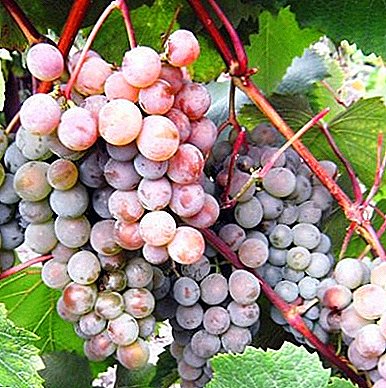 This species is the result of the selection of specialists from the Scientific Research Institute of the Academy of Agricultural Sciences of Michurinsk This is an early ripe hybrid form of “Saba Pearls” spread across the country.
This species is the result of the selection of specialists from the Scientific Research Institute of the Academy of Agricultural Sciences of Michurinsk This is an early ripe hybrid form of “Saba Pearls” spread across the country.The main advantage of the new hybrid is: increased winter hardiness to -30 ° C and reduced vulnerability to fungal diseases, versatility of purpose.
Features: characterized by medium growth and early fruit ripening (120 days). The effectiveness of fruiting shoots - 85%. Optimum load - 45 eyes, pink color of berries and served as the reason for choosing the existing name of the variety.
The original taste and quality of the skin make grapes a standard representative of the group of table varieties, the sugar content is up to 26%, the acidity is up to 9g / l. The average harvest is 100kg / ha, the yield increases with each year of the plant's life, reaching a maximum of 5th year. Cluster weight reaches 0.5 kg, young shoots ripen well to fruiting. Winter can hybrid right on the trellis, experiencing a decrease in temperature to -40 ° C.
Fruit transportability improved. Vaccinated against major grape diseases. Used for fresh consumption, production of juices and light wines.
- Crimean Pearl - table white variety of the Crimean selection (Magarach). With "Pearls Saba" has no relationship. Filled assortment in 1957.
The differences are seen in the form of a large leaf (deeply dissected), in the size of the berries reaching a weight of 5g., The color of the skin and pulp is light green. The efficiency of fruiting is 78%, the yield is high (up to 150 c / ha).
The shape of the brush is conical, the weight of the brushes is up to 300 grams, the acceptable load on the bush is 30 eyes. It belongs to covering types of grapes, has low resistance to diseases.
- Grape Black Pearl. This variety - technical selection VNIIViV them. Potapenko. Parents: a hybrid of Amur and Augusta varieties, a hybrid of Levokumsky and Centaur Magarach. Registered in the State Register in 2005.
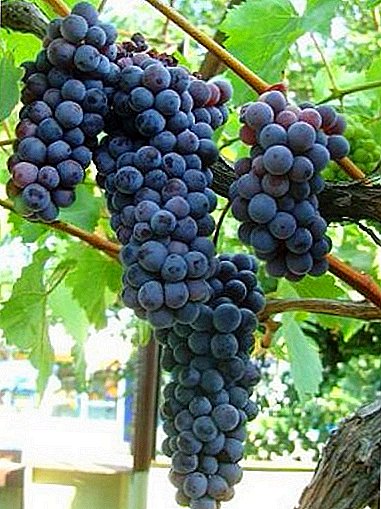 Features: strong growth of the bush, is formed on two shoulders at a height of 1 meter. Rooting rate is high.
Features: strong growth of the bush, is formed on two shoulders at a height of 1 meter. Rooting rate is high.Early and average ripening period, yield up to 130 kg / ha. The optimum load on the bush - 17 eyes, dense bunch supplemented with wings. The fleshy berries are slightly oval, dark blue, with colorless flesh, belonging to the nutmeg varieties manifests itself in a persistent aroma.
Sugar accumulation is high (up to 24%), acids - 7gr / l, assessment of table wine taste according to the tasting scale - 7.6, seasoned dessert brands - 9.0. Mildew injuries - 2 points, winter hardiness -26оС.
Among the varieties used for wine production are also Saperavi, Riesling and Montepulciano.
Interesting: In Greece, the feast always began with three mandatory toasts: for the health of those present, in memory of friends who are not there, to the glory of the gods.
Protection against spider mites
With the defeat of a spider mite, the plant loses the functionality of the leaves as a mechanism for photosynthesis. The parasites suck out the juice of the shoots and poison it with the poison of their saliva.
The structure of the plant is deformed, the leaves curl and fall. Supporters of pests are the plants of the main house - weeds, from which they move to the vineyards, and hot, dry weather.
For grapes are equally dangerous:
- the mite is red, whose web is less dense, and the red bloom from the colonies of insects appears on the nodes of the vine;
- common spider - has a clutch of orange eggs;
- spider's hornbeam - females arrange wintering right on the bark of the bush.
Control measures:
- Attracting natural enemies of ticks: cowbugs, flower bugs.
- Mowing the vineyard to remove weeds.
- Treatment of the bushes before the beginning of the growing season and 2 weeks after - with nitrophen, rohor, fosalon, etc. with alternating fungicides to avoid persistent addiction in ticks.
- Pruning and burning of highly infected areas of the bark.
Vineyard damage can cause 30 types of mites. Common to them is the large egg laying on the bark near the knots. Therefore, the bushes should be regularly inspected to identify parasites.
We also recommend that you familiarize yourself with the signs and features of the prevention of such common grape diseases as anthracnose, chlorosis, bacteriosis, mildew and oidium, and bacterial cancer. Details about them you can read in the individual materials of the site.
All grape varieties with the inclusion in the title of the word "pearls" will definitely replenish your treasury of plants in the garden, whatever the scale.


 This species is the result of the selection of specialists from the Scientific Research Institute of the Academy of Agricultural Sciences of Michurinsk This is an early ripe hybrid form of “Saba Pearls” spread across the country.
This species is the result of the selection of specialists from the Scientific Research Institute of the Academy of Agricultural Sciences of Michurinsk This is an early ripe hybrid form of “Saba Pearls” spread across the country. Features: strong growth of the bush, is formed on two shoulders at a height of 1 meter. Rooting rate is high.
Features: strong growth of the bush, is formed on two shoulders at a height of 1 meter. Rooting rate is high.